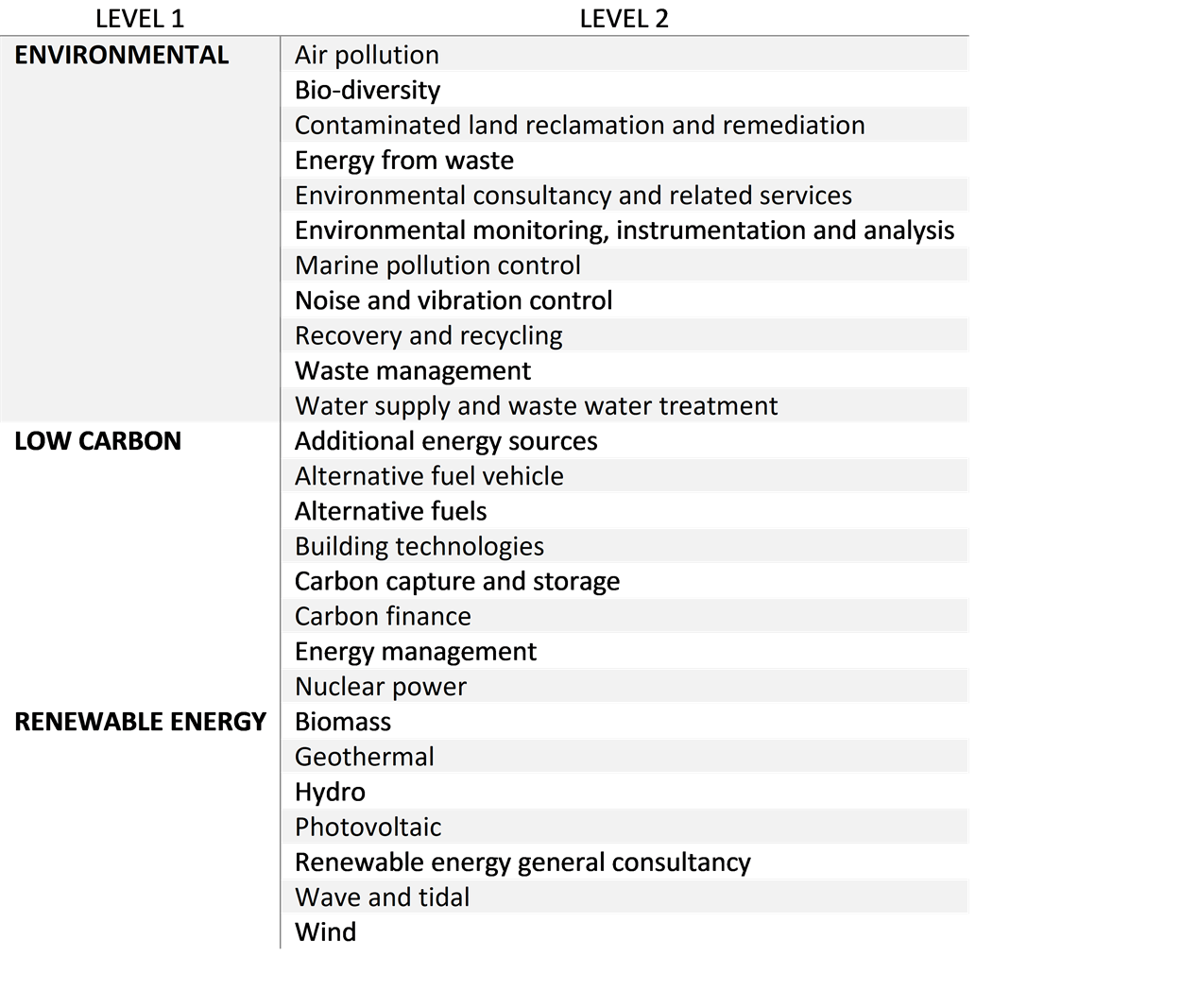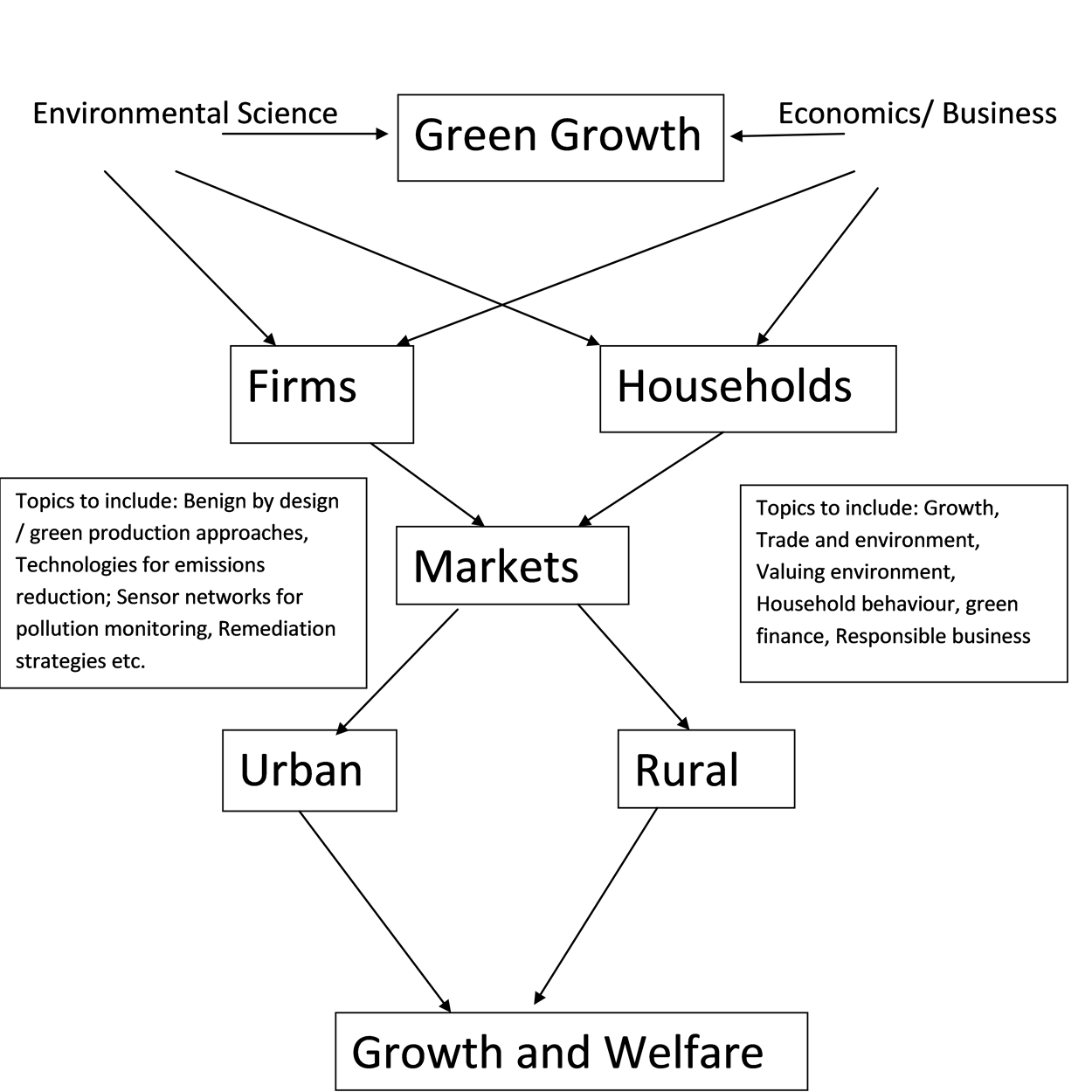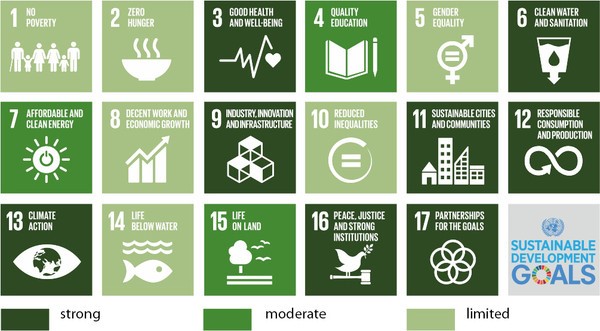by David Dickinson, Jiadong Tong, Jinhui Jeanne Huang and Iseult Lynch
Environmental degradation is a challenge for scientists, to understand the causes, consequences and potential solutions, and for economists, to ensure that the behaviours of firms and households evolve to reflect and account for the true costs of environmental damage. The UoB-Nankai Joint Research Institute for Green Growth addresses the dichotomy of economic growth under the market system and environmental protection, which has at its heart the Precautionary Principle. Our premise is that operationalising benign by design production, a technology driven focus on emissions reduction and a social movement around green growth, underpinned by solid environmental and industrial economic principles, will lead to a framework for green economic growth. Delivering this requires innovative integration of technological, regulatory and financial incentives for businesses into economic and environmental policy, and significant lifestyle changes for individuals to value environmental protection.
Pollution is the great challenge of the Anthropocene epoch, contributing to reduced health and wellbeing, driving climate change, biodiversity loss, ocean acidification, and harming the world's fresh water supply. The Lancet Commission on Pollution and Health demonstrated that pollution is responsible for 9 million premature deaths each year. However, pollution is both preventable and recoverable with investment and innovation, and thus there is a clear need to develop the business model for green growth or the “business of environmental protection”. To achieve continued economic prosperity within the sustainable resources of the planet, the global economy needs to deliver growth that reflects the true cost of that growth. If that is not achieved resources (including the environment) are inefficiently allocated. A well-known way of describing these trends is the Green Economy, which involves large scale, dramatic changes in the way the global economy operates and countries interact to become low carbon, resource efficient and socially inclusive.
While it is difficult to quantify the current value and scale of the green economy, several approaches are emerging. Early efforts by the UK government to define ‘Environmental Technologies’ in 2007 were a response to the limitations of the UK industry classification system to accurately estimate the economic value of environmental protection within the UK economy. Building on this, the Low Carbon and Environmental Goods and Services Sector (LCEGSS) dataset has been developed using a wide range of data types and sources, and a sectoral definition that is both ‘top-down’ and ‘bottom-up’ and was defined to reflect efforts to better align the environmental protection, renewable energy and resources management sections of the definition with Eurostat’s Environmental Goods and Services Sectors (EGSS). Table 1 shows the first two levels of the main LCEGSS taxonomy, with the third level available in the full dataset.
 Table 1: The first two levels of the taxonomy developed to categorise and value the global Low Carbon and Environmental Goods and Services Sector. From Georgeson & Maslin, 2019).
Table 1: The first two levels of the taxonomy developed to categorise and value the global Low Carbon and Environmental Goods and Services Sector. From Georgeson & Maslin, 2019).
Within the UK green economy, Low Carbon is the largest Level 1 sub-sector and grew 6.9% (sales) between 2014/15 and 2015/16, with sales of £3,572 million and 1,172 companies employing 22,888 people. Renewable Energy was the second largest Level 1 sub-sector and also grew 6.9% (sales) in the same period, with sales amounting to £1,956 million across 846 companies employing 14,645 people. Environmental is the smallest Level 1 sub-sector and grew just 3.5% (Sales) in the period, leading to sales of £1,231 million by 380 companies employing 7,583 people. Despite this, the Committee on Climate Change has highlighted both heat and transport as energy demand markets in which the UK is failing to make sufficient headway to reduce reliance on fossil fuels, e.g., only 1.2% of car sales in 2016 were electric cars but by 2030 three out of every five new cars sold (60%) need to be electric, and the trajectory for reduction in emissions from transport is falling quite a long way short of ambitions (-17%).
A key driver of many of the preventable and recoverable pollution processes globally, and a clear focus for potential environmental solutions, are particles be they natural, anthropogenic or engineered. Many particles are harmful to human and environmental health, such as the well-known PM10 and PM2.5 air pollution particles and their smaller ultrafine fraction, which are are linked with respiratory and cardiovascular diseases, as well as neurodegeneration and cancer, with air pollution linked to 40,000 deaths/year in the UK and responsible for reducing UK life expectancy by 4-6 months. Nearly 300 cities in China badly failed air-quality standard measurements in 2015, according to data collected by Greenpeace, and more than 1.6 million people per year die in China from breathing toxic air.
Air pollution alone has been estimated to reduce GDP by 6.5 percent annually, according to RAND Corp. estimates, mainly driven by lost productivity, since factories are shut down on bad air days to avoid the dangerous health effects of breathing the dense, toxic air. The visibility of air pollution means that it makes headlines, but water and soil pollution are equally harmful. Water pollution is exacerbating China's severe water scarcity problems, bringing the overall cost of water scarcity to about 1% of GDP.
Another aspect of particles is their capability of transporting other species such as viruses and infectious agents, and indeed the correlation between air pollution hotspots and Covid hotspots is clear, although the underlying mechanisms and whether viruses associated with PM remain infectious is still being investigated. Road deposited dust particles have also been associated with the transport of other pollutants including metals and phosphorus, continuing the re-distribution of pollutants between air and water. Because of their particulate nature and tendency to aggregate, particles are useful targets for pollution remediation themselves as they can be “trapped or caught”, and as a result of their high surface area for binding of co-pollutants facilitating the capture and remediation of target pollutants. Thus, much of the scientific and technological focus of both reduction and mitigation of pollution focusses around particle-based solutions, and as this is a core expertise area in both UoB and Nankai particle-driven solutions were selected as one of the key foci for the scientific and technological stands of the UoB-Nankai Joint Institute for Green Growth. Research areas span sensor development, evaluation of the health and safety of advanced materials, developed of strategies to reduce air pollution, and development of particles that are safe and sustainable by design such as utilising low carbon source materials, greener synthesis approaches, or considering recovery and re-use of constituent components at the design stage, so called benign-by-design production. A clear focus on design of solutions that are cheap, can be retrofitted easily onto existing industrial plants and result in demonstrable improvements to environmental quality is central to the Institute’s activities.
Benign by design (BbD) production and development means that considerations of the environment happen much earlier in the product/process development approach. At the heart of BbD lies the concept of substituting the question “Is it safe/sustainable?” with “Can we engineer it to be safe/ sustainable?” These concepts reflect the need to reduce reliance on critical non-renewable resources and to move away from the single-use culture towards a more circular economy. Coupling this approach with technologies for emissions reduction across a product/process life cycle will result in dramatically greener production approaches and lower environmental pollution and damage. However, technical solutions alone are not sufficient to address the problems, and thus the core aspect of the UoB-Nankai Joint Research Institute for Green Growth is the interweaving of a technological and economic focus, including development of a set of tools and interventions to support the integration of environmental factors enter into business decision making and behaviour, including providing important multi-stakeholder perspectives, and leading to co-development of new approaches to drive green growth. The foreseen output is the development of the reference framework, including policy, economic and technological instruments that can be applied in the balancing of economic (growth) with environmental (sustainable and pollution reduction) needs, utilisable by the Chinese and British authorities to make economic and environmental policy decisions.
The interweaving of a technological (emissions reduction and remediation focused environmental science) and economic focus, directed through a deepened understanding of both consumer and business attitudes to environmental policy, as shown schematically in Figure 1, will lead to improvements on three fronts:
(1) a social movement on public health benefits derived from a clean environment,
(2) an industrial focus on cost-effective emissions reduction coupled to corporate responsibility and sustainability as selling points, and
(3) a governmental policy framework that maximises incentives for green growth and provides a roadmap and toolbox of policy interventions to address specific local, regional and national environmental and economic challenges.
Key activities include efforts to engage the wider community in public debate around who should fund the costs associated with remediation and public health projects such as reduction of emissions. Development of public-private partnerships to address these issues will be a central focus of the “green growth: the business of environmental protection” framework.

Figure 1: Schematic illustration of the broader approach to integrating Environmental Science and Economics/Business to provide workable solutions to the growing environmental problems of developing countries. The framework is being exemplified initially by China, and subsequently being translated and adapted to the needs of other Asian and African economies.
Our working hypothesis is that identifying how the scientific discoveries and innovations which will solve environmental challenges can influence the behaviour of firms, households and markets will ensure that the true cost of environmental degradation is understood and that economies respond by the right sort of innovation and response to scientific understanding and hence to allocating resources efficiently. For example, residents’ consumer preferences (physical health, living environment, environment-friendly products or services) and further impact their behaviour (willingness to pay for environment, consumption demand, choice of employment and residence, participation in public policy making, active recycling efforts, etc.). The impact of environmental regulation upon corporate performance and corporate behaviour (consumption demand, market share, cost, industry access requirement (consumers, industry access, location, innovation and corporate restructuring, etc.), use of technologies to reduce emissions, sustainability practices etc.) in developed (UK) versus rapidly developing (China) will lay the foundation for industrial analysis and macroeconomic analysis. This is being supplemented with field work in key areas including rural-urban gradients to evaluate the air, water and soil quality in Beijing, Tianjin, Hebei, Huaihe River Basin and other key areas, through collaboration with the environmental protection authorities, in order to lay down mid-term and long-term evolutionary path and respective policy framework and technology interventions for environmental remediation and long-term reduction in emissions.
The dual challenge of growing populations and rapid urbanisation have resulted in enormous challenges to the planet’s ecosystems and the essential life-giving services they provide, including access to clean water, air and food. Facilitating the economic transformation and growth of global south countries whilst maintaining or improving the environmental footprints of rapidly developing economies – i.e., developing a framework for Green Growth and envisioning environmental protection as a profitable business enterprise in itself via the Business of Environmental Protection - is a vital and multi-dimensional challenge that will be tackled by the UoB-Nankai Joint Institute of Green Growth through the unique pairing of environmental sciences, economists, social change actors and a variety of public, municipal and industrial leaders. Indeed, the dual role of environmental sciences and economics have been visualised very effectively by UN Economic Commission for Europe’s mapping of the environmental relevance to the 17 Sustainable Development Goals, with 8 being found to have a strong link, 3 a moderate link and just 6 having a limited environmental aspect, as shown in Figure 2.

Figure 2: Mapping of the SDGs in terms of their environmental relevance and activities undertaken by the Environment subprogramme of the United Nations Economic Commission for Europe.
In summary, we need to find ways of developing the global economy without environmental degradation. This means incorporating the value of nature into our economic strategies and placing environmental protection at the heart of all developments. Unravelling this complex issue requires a multi-disciplinary approach, bringing together people with a wide range of expertise.